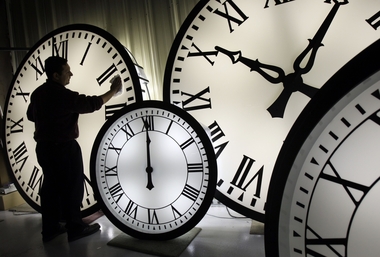Why Congress nailed it on Daylight Saving TIme

Today, the US Senate did something somewhat remarkable: It passed a piece of legislation by unanimous consent. As in, no member of the Senate objected to it.
What was this legislation that broke the partisan logjam that has long dominated politics? It was a move to make Daylight Saving Time permanent beginning in 2023.
"You'll see it's an eclectic collection of members of the United States Senate in favor of what we've just done here in the Senate, and that's to pass a bill to make Daylight Saving Time permanent," Florida Sen. Marco Rubio, one of the bill's cosponsors, said in a Senate floor speech. "Just this past weekend, we all went through that biannual ritual of changing the clock back and forth and the disruption that comes with it. And one has to ask themselves after a while why do we keep doing it?"
Yes! Why? (I do my best to be nonpartisan in these matters, but on this issue, I can't stay on the sidelines.)
It's unclear if the Democratic-led House will take up the measure -- although such support from the Senate might have the lower chamber eager to score a win of its own. President Joe Biden hasn't offered his take on whether he would sign such a bill -- yet. (You can be sure the White House will be asked about this ASAP.)
So, how did we get here?
The notion of, well, saving daylight goes all the way back to Benjamin Franklin. In a satirical essay he wrote while he was a US envoy to Paris in the latter stages of the 18th century, Franklin noted the power of using "the economy of using sunshine instead of candles" as a way to save Parisians money.
(Fun fact: Daylight Saving Time never had anything to do with farming despite the persistence of that myth. Farmers actually lobbied against Daylight Saving Time!)
But it wasn't until 1966 -- and the Uniform Time Act passed by Congress -- that Daylight Saving Time became the law of the land. (Worth noting: The Act allowed individual states to opt out of the whole Daylight Saving Time thing. Hawaii and Arizona currently do not follow DST.)
The impetus for the act was, ostensibly, to save energy (and money.)
"The idea is that in the summer months, we shift the number of daylight hours we get into the evening. So if the sun sets at 8 pm instead of 7 pm, we'd presumably spend less time with the lights on in our homes at night, saving electricity.
"It also means that you're less likely to sleep through daylight hours in the morning since those are shifted an hour later too. Hence 'saving' daylight hours for the most productive time of the day.
"But this premise never seemed to pan out. The presumed electricity savings of taking advantage of more daylight in the evening turns out to be unclear or nonexistent."
Under the original law, you would "spring" your clock forward an hour on the last Sunday of April, and "fall" back an hour on the last Sunday of October. That changed when then-President George W. Bush signed the Energy Policy Act of 2005, which, beginning in 2007, had the country spring forward on the second Sunday in March and fall back on the second Sunday in November.
In 2005, Indiana, which had previously not followed Daylight Saving Time, also passed a law to put it in step with the rest of the country (except for Hawaii and Arizona). The measure was pushed by then-Gov. Mitch Daniels, who insisted the state's refusal to participate in DST had hurt business in the state and led to confusion.
As best as I can tell -- based solely on personal experience -- the only argument to fall back is so that I don't fall asleep watching "Saturday Night Live" for that one episode on the second Saturday night in November. Which isn't enough of a reason to keep the status quo.
Analysis by Chris Cillizza, CNN Editor-at-large, The-CNN-Wire™ & © 2022 Cable News Network, Inc., a WarnerMedia Company. All rights reserved.
The Gayly 3/16/2022 @ 11:54 a.m. CST.





